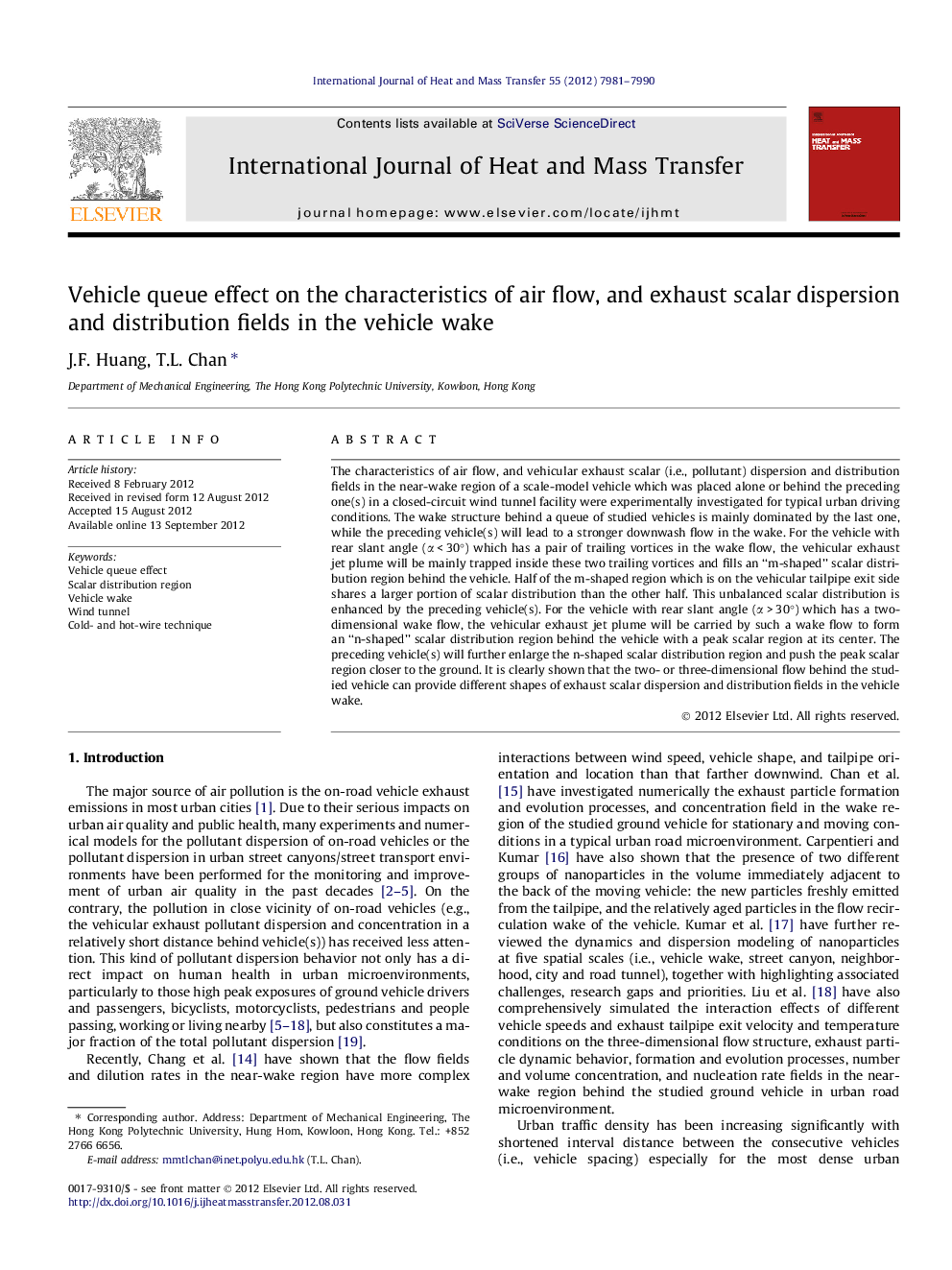| Article ID | Journal | Published Year | Pages | File Type |
|---|---|---|---|---|
| 7059644 | International Journal of Heat and Mass Transfer | 2012 | 10 Pages |
Abstract
The characteristics of air flow, and vehicular exhaust scalar (i.e., pollutant) dispersion and distribution fields in the near-wake region of a scale-model vehicle which was placed alone or behind the preceding one(s) in a closed-circuit wind tunnel facility were experimentally investigated for typical urban driving conditions. The wake structure behind a queue of studied vehicles is mainly dominated by the last one, while the preceding vehicle(s) will lead to a stronger downwash flow in the wake. For the vehicle with rear slant angle (α < 30°) which has a pair of trailing vortices in the wake flow, the vehicular exhaust jet plume will be mainly trapped inside these two trailing vortices and fills an “m-shaped” scalar distribution region behind the vehicle. Half of the m-shaped region which is on the vehicular tailpipe exit side shares a larger portion of scalar distribution than the other half. This unbalanced scalar distribution is enhanced by the preceding vehicle(s). For the vehicle with rear slant angle (α > 30°) which has a two-dimensional wake flow, the vehicular exhaust jet plume will be carried by such a wake flow to form an “n-shaped” scalar distribution region behind the vehicle with a peak scalar region at its center. The preceding vehicle(s) will further enlarge the n-shaped scalar distribution region and push the peak scalar region closer to the ground. It is clearly shown that the two- or three-dimensional flow behind the studied vehicle can provide different shapes of exhaust scalar dispersion and distribution fields in the vehicle wake.
Keywords
Related Topics
Physical Sciences and Engineering
Chemical Engineering
Fluid Flow and Transfer Processes
Authors
J.F. Huang, T.L. Chan,
